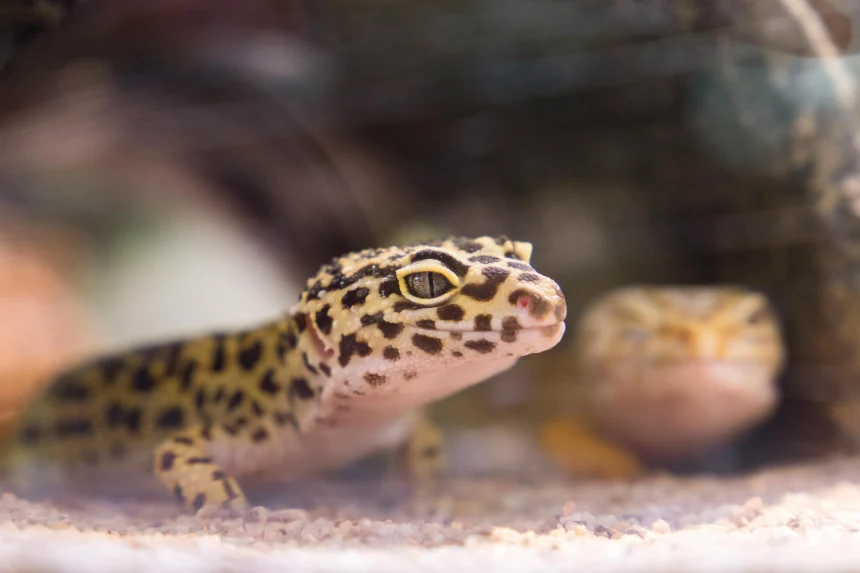Introduction
Lizards are captivating creatures that continue to intrigue people of all ages. From their diverse appearances to their unique behaviors, they offer a glimpse into a world that is often overlooked. In this extensive exploration of “Lizard Breath 5678,” we will delve into the lives of these remarkable reptiles, uncovering their significance in ecosystems, their various types, habitats, adaptations, and the conservation efforts needed to protect them.
Understanding Lizard Breath 5678
Lizard Breath 5678 represents more than just a catchy phrase; it symbolizes an adventure into the fascinating world of lizards. This journey involves exploring their habitats, understanding their behaviors, and appreciating their role in our ecosystems. With over 6,000 species of lizards worldwide, each offers unique traits and adaptations that help them survive in various environments. This exploration will highlight the ecological importance of lizards and inspire a greater appreciation for these remarkable reptiles.
The Ecological Importance of Lizards
Lizards play a vital role in maintaining ecological balance. They are not just intriguing creatures but also essential components of their ecosystems. Here are some key ecological roles lizards fulfill:
- Insect Control: Lizards are efficient predators of insects, helping to regulate their populations. For example, the common house lizard (Hemidactylus frenatus) consumes various insects, including mosquitoes, flies, and cockroaches, contributing to pest control in urban areas.
- Food Source: Lizards serve as prey for numerous animals, including birds, mammals, and other reptiles. Their presence in the food web supports a healthy ecosystem by providing nourishment for various predators.
- Seed Dispersal: Some lizards contribute to plant reproduction by dispersing seeds through their feces. This process helps maintain plant diversity in their habitats.
- Bioindicators: Lizards can serve as indicators of environmental health. Changes in lizard populations can signal shifts in ecosystem balance, often reflecting the impacts of climate change, habitat loss, and pollution.
The Diversity of Lizards
Lizards come in various shapes, sizes, and colors, with each species exhibiting unique traits. Below, we will discuss some of the most common types of lizards and their distinct characteristics.
1. Iguanas
Iguanas are large, herbivorous lizards known for their impressive size and distinct features. The green iguana (Iguana iguana) is one of the most recognized species. These lizards primarily inhabit rainforests, but they can also be found in urban areas. Their diet consists mainly of leaves, fruits, and flowers.
Interesting Fact: Iguanas can grow up to 6 feet in length and have a lifespan of over 20 years in captivity.
2. Geckos
Geckos are small to medium-sized lizards known for their vocalizations and ability to climb walls. The common house gecko (Hemidactylus frenatus) is a familiar sight in many homes. Geckos are primarily nocturnal and feed on insects, making them valuable for pest control.
Interesting Fact: Some gecko species can change color for camouflage, while others have adhesive toe pads that allow them to walk on vertical surfaces.
3. Chameleons
Chameleons are famous for their ability to change color, a trait that serves various purposes, including camouflage, communication, and temperature regulation. The panther chameleon (Furcifer pardalis) is one of the most striking species, displaying vibrant colors.
Interesting Fact: Chameleons have a unique 360-degree vision, allowing them to see in all directions without moving their heads.
4. Skinks
Skinks are characterized by their smooth, shiny scales and elongated bodies. They often have small or no limbs, giving them a snake-like appearance. The blue-tongued skink (Tiliqua scincoides) is a well-known species that uses its bright blue tongue to ward off predators.
Interesting Fact: Skinks are often burrowers, using their streamlined bodies to navigate through soil and leaf litter.
Habitat and Distribution of Lizards
Lizards inhabit a wide range of environments, from deserts to rainforests. Each species has adapted to its specific habitat, developing unique characteristics that help it thrive. Here, we will explore some common lizard habitats and their distributions.
Common Habitats for Lizards
| Habitat | Common Species | Characteristics |
| Deserts | Horned Lizard | Adapted to dry, arid conditions |
| Rainforests | Green Iguana | Prefers warm, humid environments |
| Grasslands | Fence Lizard | Thrives in open areas with vegetation |
| Urban Areas | Common House Gecko | Adapts well to human environments |
Adaptations to Environment
Lizards have evolved various adaptations that allow them to survive in their environments. Some of these adaptations include:
- Camouflage: Many lizards can blend into their surroundings, making them less visible to predators. This ability is crucial for both avoiding danger and ambushing prey.
- Behavioral Adaptations: Lizards exhibit unique behaviors that help them adapt to their habitats. For example, some species bask in the sun to regulate their body temperature, while others dig burrows to escape extreme temperatures.
- Dietary Adaptations: Lizards have diverse diets, ranging from herbivorous to carnivorous. This dietary flexibility allows them to thrive in various ecosystems.
The Role of Temperature
Lizards are ectothermic, meaning they rely on external sources of heat to regulate their body temperature. This trait influences their behavior and habitat selection. For instance, during cooler periods, lizards may seek sunny spots to warm up, while in extreme heat, they may burrow or find shade.
The Behavior of Lizards
Lizard behavior is as varied as their physical characteristics. Understanding these behaviors provides insight into their lifestyles and survival strategies.
1. Social Behavior
Lizards exhibit a range of social behaviors, from solitary to social living. Some species, like the green iguana, can be territorial, especially males during the breeding season. Others, such as certain gecko species, may coexist in groups, providing benefits like increased vigilance against predators.
2. Mating Rituals
Lizard mating rituals can be quite elaborate. Male lizards often display vibrant colors, perform courtship dances, or engage in head-bobbing to attract females.
- Courtship Displays: Males may display their bodies, change colors, or perform specific movements to impress females.
- Territorial Behavior: Males may defend territories during the breeding season, displaying aggressive behaviors towards rivals.
4. Feeding Habits
Lizards are primarily insectivorous, but their diets can vary widely depending on the species. Some lizards are strict herbivores, while others are opportunistic feeders.
- Insectivores: Most lizards feed on insects, including ants, beetles, and crickets.
- Herbivores: Species like iguanas primarily consume leaves, fruits, and flowers.
- Carnivores: Some larger lizards, such as monitor lizards, will eat small mammals, birds, and even other reptiles.
5. Defense Mechanisms
Lizards have developed various defense mechanisms to avoid predation. Some common strategies include:
- Tail Autotomy: Many lizard species can shed their tails when threatened, allowing them to escape while distracting predators. The lost tail can regenerate over time.
- Camouflage: As previously mentioned, blending into the environment is a critical survival strategy for many lizards.
- Display Behavior: Some lizards exhibit aggressive displays, such as puffing up their bodies or changing colors, to deter predators.
Conservation of Lizards
Despite their importance, lizard populations face numerous threats. Understanding these challenges is essential for promoting conservation efforts.
Threats to Lizards
Lizards encounter various threats that impact their populations:
- Habitat Loss: Urbanization, agriculture, and deforestation contribute to habitat loss, significantly impacting lizard populations.
- Climate Change: Rising temperatures and changing precipitation patterns can disrupt lizard habitats and food sources, affecting their survival.
- Pollution: Pesticides and pollutants can harm lizard populations, affecting their health and reproductive success.
- Invasive Species: The introduction of non-native species can disrupt ecosystems and lead to competition for resources.
Conservation Efforts
Efforts to conserve lizards focus on protecting their habitats and raising awareness about their ecological importance. Here are some key strategies:
- Habitat Protection: Establishing protected areas and national parks helps preserve critical lizard habitats from development and degradation.
- Education and Outreach: Raising awareness about lizard conservation encourages individuals and communities to participate in preservation efforts.
- Research and Monitoring: Conducting research on lizard populations and their needs helps inform conservation strategies.
How You Can Help
As individuals, we can take steps to help protect lizards and their habitats. Here are some actions you can consider:
- Support Conservation Organizations: Contribute to organizations dedicated to lizard conservation and habitat protection.
- Educate Others: Share your knowledge about lizards and their importance with friends, family, and your community.
- Reduce Chemical Use: Limit the use of pesticides and chemicals in your garden to protect local lizard populations.
- Create a Habitat: If you have a garden, consider planting native plants that attract lizards and provide shelter.
Conclusion
Lizard Breath 5678 represents an exciting exploration of the diverse and essential world of lizards. By understanding their ecological importance, diverse species, behaviors, and the challenges they face, we can work together to protect these remarkable reptiles. Through conservation efforts and increased awareness, we can ensure that future generations continue to marvel at the beauty and diversity of lizards in our ecosystems. Let’s embrace the adventure of Lizard Breath 5678 and commit to preserving the rich tapestry of life that these creatures represent.
Frequently Asked Questions (FAQs)
What is Lizard Breath 5678?
Lizard Breath 5678 symbolizes an educational journey into the fascinating world of lizards.
Why are lizards important to ecosystems?
Lizards play essential roles as insect predators, prey for other animals, and indicators of environmental health.
How can I identify different lizard species?
Observing their size, color patterns, habitat, and behaviors can help identify various lizard species.
What threats do lizards face?
Habitat loss, climate change, pollution, and invasive species pose significant threats to lizard populations.
How can I help conserve lizards?
Supporting conservation efforts, reducing chemical use, and educating others are effective ways to help.
What do lizards eat?
Most lizards are insectivores, but some are herbivores or carnivores, depending on their species.





